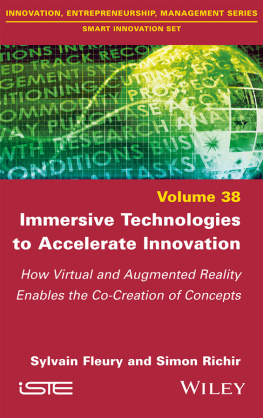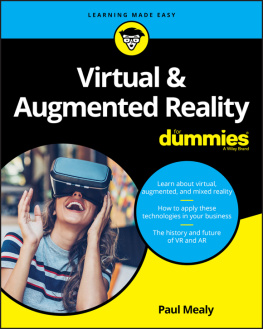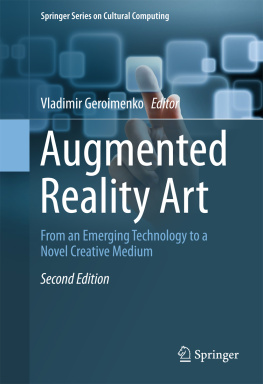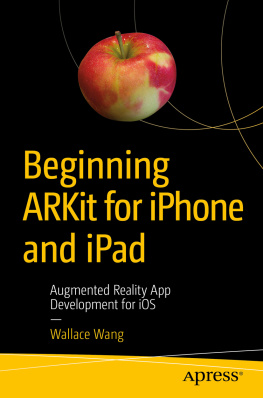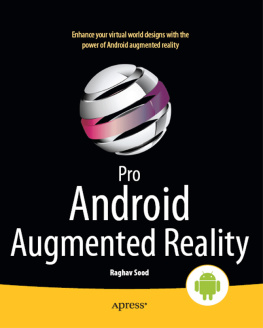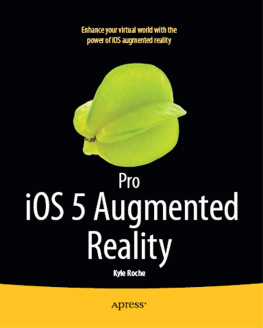About This E-Book
EPUB is an open, industry-standard format for e-books. However, support for EPUB and its many features varies across reading devices and applications. Use your device or app settings to customize the presentation to your liking. Settings that you can customize often include font, font size, single or double column, landscape or portrait mode, and figures that you can click or tap to enlarge. For additional information about the settings and features on your reading device or app, visit the device manufacturers Web site.
Many titles include programming code or configuration examples. To optimize the presentation of these elements, view the e-book in single-column, landscape mode and adjust the font size to the smallest setting. In addition to presenting code and configurations in the reflowable text format, we have included images of the code that mimic the presentation found in the print book; therefore, where the reflowable format may compromise the presentation of the code listing, you will see a Click here to view code image link. Click the link to view the print-fidelity code image. To return to the previous page viewed, click the Back button on your device or app.
Practical Augmented Reality
A Guide to the Technologies, Applications, and Human Factors for AR and VR
Steve Aukstakalnis

Boston Columbus Indianapolis New York San Francisco
Amsterdam Cape Town Dubai London Madrid Milan
Munich Paris Montreal Toronto Delhi Mexico City
So Paulo Sydney Hong Kong Seoul Singapore Taipei Tokyo
Many of the designations used by manufacturers and sellers to distinguish their products are claimed as trademarks. Where those designations appear in this book, and the publisher was aware of a trademark claim, the designations have been printed with initial capital letters or in all capitals.
See the for a list of product trademarks.
The appearance of U.S. government visual imagery does not imply or constitute endorsement.
The author and publisher have taken care in the preparation of this book, but make no expressed or implied warranty of any kind and assume no responsibility for errors or omissions. No liability is assumed for incidental or consequential damages in connection with or arising out of the use of the information or programs contained herein.
For information about buying this title in bulk quantities, or for special sales opportunities (which may include electronic versions; custom cover designs; and content particular to your business, training goals, marketing focus, or branding interests), please contact our corporate sales department at or (800) 382-3419.
For government sales inquiries, please contact .
For questions about sales outside the U.S., please contact .
Visit us on the Web: informit.com/aw
Library of Congress Control Number: 2016946688
Copyright 2017 Pearson Education, Inc.
All rights reserved. Printed in the United States of America. This publication is protected by copyright, and permission must be obtained from the publisher prior to any prohibited reproduction, storage in a retrieval system, or transmission in any form or by any means, electronic, mechanical, photocopying, recording, or likewise. For information regarding permissions, request forms and the appropriate contacts within the Pearson Education Global Rights & Permissions Department, please visit www.pearsoned.com/permissions/.
ISBN-13: 978-0-13-409423-6
ISBN-10: 0-13-409423-9
Text printed in the United States on recycled paper at RR Donnelley in Crawfordsville, Indiana
First printing: September 2016
Publisher
Mark L. Taub
Executive Editor
Laura Lewin
Development Editor
Songlin Qiu
Marketing Manager
Stephane Nakib
Managing Editor
Sandra Schroeder
Senior Project Editor
Lori Lyons
Production Manager
Dhayanidhi
Copy Editor
Gill Editorial Services
Indexer
Tim Wright
Proofreader
H. Muthukumaran
Technical Reviewers
Yuval Boger
Victor Luo
Eric Maslowski
Carl Wakeman
Editorial Assistant
Olivia Basegio
Cover Designer
Chuti Prasertsith
Compositor
codeMantra
Praise for Practical Augmented Reality
A valuable addition to the library of anyone setting out on their virtual journey.
Dr Rab Scott
Head of VR, Nuclear AMRC
A well-presented introduction to advanced visualization technologies, which will provide readers with an informed overview of this fast-paced, high-tech industry.
Chris Freeman
Augmented Reality Technical Fellow, University of Sheffield AMRC
Filled with excellent, imaginative information that will inform both experienced and first-time readers alike. Practical Augmented Reality is worth reading not only for its wealth of data and research, but also for its insights into the markets and opportunities ahead of us. If you have an interest in this exciting new technology, this is a must-have resource and an enjoyable exploration into this brave new world.
Roy Taylor
Corporate Vice President for Content and Technology, AMD (Advanced Micro Devices)
Steven Aukstakalnis stands on the ever-changing edge of the virtual and augmented reality world. Drawing from a rich history in the industry, he is able to share a clear understanding of the technologies, products, and ideas that will reshape the way we work and play. May the knowledge he shares empower you to help create a truly fantastic new future!
Brent Baier
Creator of the Peregrine Glove
Mixed or augmented reality is a grand frontier not only for computation, but for how people experience their world and each other. This book sets a frame around that which isnt framed. Read it in order to understand our new world.
Jaron Lanier
Author of Who Owns the Future and You Are Not A Gadget
In memory of my mother and elder brother,
both of whom passed away in the course of writing this book.
You left us way too early and are deeply missed.
Foreword
After months of electrical, mechanical, Zero-G, underwater, and network certification, we had finally launched two Microsoft HoloLens mixed-reality devices to the International Space Station (ISS). On the morning of February 20th, 2016, our team, stationed at NASA Johnson Space Centers Mission Control, successfully made the first holographic call to space. Astronaut Scott Kelly picked up and proceeded to take us on a tour of his home for the past year. At one point, he guided us to the cupola (observation module), slowly lowered the solar shields, and showed us the curvature of the Earth as it floated into our view. As if that was not enough, Scott then drew annotations on top of the various ISS modules and talked about their importance in the discovery of science and the maintenance of life-support for the crew. This unforgettable moment was my affirmation in the future of virtual and augmented reality.
Back on Earth, we are using similar technologies at NASA to bring our scientists to Mars, provide CAD-level design visualizations to our spacecraft engineers, and enhance the capabilities of our robot operators. By providing better contextual awareness of the distant environments, we are dissolving the physical barriers between the operators and the robots they are expected to operate. By resolving issues earlier in the design, we can reduce the cost of building our spacecraft, which ultimately allows us to build more spacecraft.


